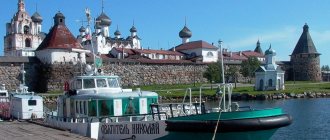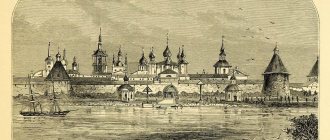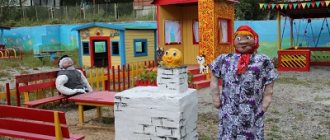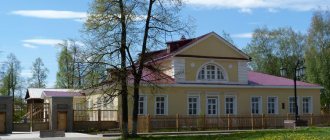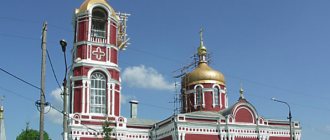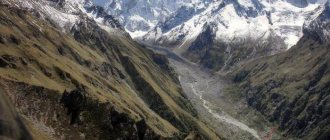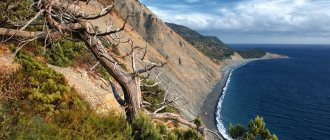Lake Onega, as can be seen on the map, is divided between the Leningrad and Vologda regions, but most of it - 80% - is still located on the territory of the Republic of Karelia. The lake is truly huge: together with all the islands, its area is 9720 km². It is considered the second largest freshwater reservoir in Europe after Lake Ladoga. Depth - 127 meters. Lake Onega was formed about 12 thousand years ago, during the Valdai glaciation.
Only one river flows out of the lake - the Svir. At the same time, 1,150 rivers flow into it: Shuya, Vytegra, Andoma and many others. For the most part, these rivers are small. Only 52 rivers are more than 10 km long. Around Lake Onega there are cities such as Petrozavodsk, Medvezhyegorsk, Kondopoga.
Etymology
The exact origin of the name is unknown. In ancient Russian writings it sounds like Onego. For example, academician A.M. Sjögren believes that it comes from the Finnish word ääni, which can be translated as “sound”: it turns out to be a “noisy, sounding lake.” Another version suggests a reference to the Sami languages. A.L. adheres to it. Pogodin: agne can be translated as “sand”, and jegge – “low-lying plain”.
Ruskeala waterfalls
How to get there: by car on the A130 highway;
by bus on the route Sortavala-Vyartsilya, stop “Ruskeala”; with an excursion, which can be booked either at the Northern Ladoga Museum: https://museum-sortavala.ru/ceny.html, or at a travel agency: https://kolmaskarelia.ru/ The waterfalls got their name from the village of Ruskeala, located nearby. The waterfalls are flat, so you won’t see “high water”. But appreciate the beauty of the surrounding landscape, which is praised by every single tourist who has been there. In combination with terraced ledges and trees, the brown-yellow, iron-rich water of the Ruskeala Falls looks unusual. Another nice feature is that the waterfalls never get smaller. Even in the midst of a hot summer, you will see a deep river and powerful streams of water.
On one of the waterfalls there is a log hut - a prop left after the film “The Dark World”. The episode “The Dawns Here Are Quiet” was also filmed here. The area around has now been improved - plastic figures and gazebos for relaxation have been installed.
Climate
The average annual temperature here is 2.5 degrees Celsius. In summer on the lake it’s around +16, in winter - -12. The climate is transitional, from continental to maritime. The water temperature in Lake Onega in the warm season ranges from +5 to +13 degrees. The maximum recorded temperature is +22 degrees. In autumn, already in October, the waters of Lake Onega cool down and the temperature drops to +2 degrees.
In winter, the reservoir freezes. The central part is covered with ice closer to January, the shores - in November and December.
City buildings: architectural diversity
Having been under the rule of different countries in different centuries, Sortavala is a mixture of architectural styles, although only from the 19th and 20th centuries: in 1903 there was a fire that destroyed almost all the wooden buildings of the Old Town.
First of all, walk along the streets, examine the buildings of the Sortavala district administration (Kirova Square, 11, “Northern Art Nouveau” style), the Post Office (Karelskaya, 19)
Regional Museum of the Northern Ladoga region (Ladoga Flotilla embankment, 5), Sberbank (Karelskaya st., 13, style - Finnish national romanticism)
The former gymnasium, and now a branch of PetrGU (Gagarina, 14), District Hospital (Sportivnaya, 1, pseudo-Gothic style), Sortavala College (Gagarin, 13).
Interesting are the Church of the Apostles Peter and Paul (Baroque), the house of the merchant Krasilnikov (Lenin St., 14, wooden building, Empire style), school No. 1 (Ladoga Flotilla embankment, 2, functionalism), the Town Hall, now the city library (Gagarin, 14, eclecticism).
Nature of the lake
Around Lake Onega there are low and swampy shores. Despite this, flora and fauna are abundantly present both in the reservoir itself and around it. Higher aquatic vegetation is not very widespread here. It is mainly present in the northern part, and even then in very small quantities. But there are a lot of reeds and reeds, which are freely located on the shores of Lake Onega. There are some sedges, egg capsules, horsetails and water lilies here. On the coast there are deep taiga forests.
As for the fauna, here we can meet about 350 of its representatives. These include aquatic insects, crustaceans, mollusks, and dozens of fish species. There are many of our feathered waterfowl friends here: geese, ducks, swans. There are short-eared owls, eagle owls, cranes, and golden eagles. As for animals, almost all typical representatives of Karelia’s nature live on the shores of Lake Onega. These are bears, beavers, moose, foxes, hares and many others.
We should also talk about fish in Lake Onega. About 45 of its representatives live here. This includes lake trout, salmon, perch, bream, pike, and pike perch. Due to the abundance of fish, fishing on Lake Onega is also popular. We will talk about it below.
Submarine Museum in Vytegra
Address: st. Komsomolskaya, 15 Phone: 8 (81746) 26-7-29 Website: https://vk.com/club46549527 Opening hours: in summer from 09:00-17:00 seven days a week, the rest of the year closed on Sunday and Monday. Cost: adult without excursion: 170 rubles, adult with excursion: 250 rubles
The Soviet submarine B-440, which at one time plied the seas and oceans, was decommissioned and moved to the shore of Lake Vytegorsk, which is 20 km from Onega.
The boat was converted into a museum, now you can go there and examine everything: the captain’s cabin and the incredibly narrow berths of the rest of the crew. Instead of hatches, the boat has ordinary doors installed for the convenience of visitors. Imagine in this tiny space 80 submariners - the crew of the boat - and wonder how they fit there. All the walls are completely usable space: the boat control unit, control valves, levers, torpedoes. The main value of the boat is its working periscope.
Fishing
Fishing on Lake Onega is a topic for a separate discussion. People come here to catch the famous local salmon and enjoy the views.
It is difficult to catch someone from the shore, so the main type of fishing is trolling. Recreation centers specially rent out boats and catamarans for this purpose. The average price for such a five-hour fishing trip is 13-15 thousand rubles (the price includes the assistance of an instructor and a boat/catamaran). You must also purchase a salmon fishing license.
Basically, reviews about such a holiday on Lake Onega are very positive, so you can easily visit this place, including for fishing.
Petrozavodsk
Onega embankment
Petrozavodsk is the main center of civilization in the Republic of Karelia. Like St. Petersburg, it was founded in 1703 by Peter I. The most beautiful place in the city is the Onega embankment, dressed in granite and stretching for 1.5 kilometers.
Lenin Square (Round), Petrozavodsk
The central Lenin Square, the former Round Square, is a historical building of the late 18th century, creating the architectural ensemble of the city. Three streets radiate from the square: Karl Marx Avenue, Zavodskaya and Peterburgskaya streets. Karl Marx Avenue is the oldest street in the city, leading to Onega embankment.
Once upon a time, a monument to Peter I was erected on Lenin Square, but it was replaced by an 11-meter monument to Lenin. Peter I is now located in Petrovsky Square, next to the embankment.
Railway station building, Petrozavodsk
The symbol of Petrozavodsk is the railway station building with a spire, built in the mid-1950s according to the design of architect V.P. Tsipulin
Where to go on Lake Onega
The coast is very picturesque. Its northern part is covered by long narrow bays, the so-called lips. They are convenient for kayaking, inflatable boats and sailboats. The Lizhemskaya and Unitskaya lips are considered the most beautiful. There are a great many rocky outcrops.
The Unitskaya Bay is tortuous. There are many islands around it, including the Transverse Islands, Kolgostrov, where you can see a pagan sanctuary. Very close by is the abandoned village of Pegrema, where a cultural and historical complex is located.
A completely different Lizhemskaya Bay. She has no twists, she is straight. The surrounding area is beautiful. This is both Sonya Island and Pai-Guba. In the south, Unitskaya and Lizhemskaya Bays join to form Bolshoye Onego Bay with sandy shores.
The Zaonezhye Peninsula is rich in its small lakes. Particularly notable is Ladmozero, at the southern end of which there is the old village of Cherkasy.
Of course, it’s also worth visiting the Povenets Bay with Velikaya Guba. Here, incredible huge boulders alternate with mixed-grass meadows. There are many archaeological sites around: the Mesolithic burial ground on South Oleny Island, or the sanctuary located on Radkolye Island.
Experienced sailors should definitely walk through the open part of the reservoir to Demon Nose. There are the famous petroglyphs of Lake Onega. And from Andoma Mountain, which is nearby, you will see a stunning panorama of the area.
Famous islands of Karelia
Balaam
How to get there:
- From St. Petersburg by boat as part of excursion groups.
- From Priozersk by meteor: travel time 1 hour, cost about 2000 rubles. There and back again.
- From Sortavala by meteor - travel time 50 minutes. In summer, meteors occur daily at 9.00, 11.00, 13.15 and 16.00. The cost of round trip travel includes a walking tour: Mon-Fri and Sunday - 2300 rubles per person, Saturday - 2570 rubles per person.
- From Pitkäranta, meteors leave the pier of the Long Beach recreation center. Travel time 1 hour. The cost of round trip travel includes a walking tour: Mon-Fri and Sunday - 2460 rubles per person, Saturday - 2750 rubles per person.
Valaam Island is a unique place with its own unique nature, climate, architecture, and people. Every year, pilgrims and tourists from all over the world come here to touch these holy places.
There are many spiritual places on the island. Of course, the main temple of the island is the Spaso-Preobrazhensky Monastery, the construction of which dates back to the 14th century. On the territory of the monastery there is the Valaam Church, Archaeological and Natural Museum-Reserve, which tells about the history of the island.
The island itself is very green; after a walk along it you can visit the monasteries: Konevsky Igumensky monastery, Resurrection (Red) monastery, Gethsemane yellow monastery, St. Nicholas monastery, St. Vladimir monastery. Another monastery is located on the island of Putsaari. Visiting the skete is possible only with the blessing of the abbot.
What is the best time to go to Lake Onega?
The best time is considered to be the end of July and the beginning of August. The nights are still light, the air is warm. Underfoot is a whole scattering of blueberries, and later lingonberries. But be prepared for mosquitoes. Be sure to take repellent with you to the lake. If you are not afraid of cold weather or are traveling by car, then it is quite possible to go in May and October.
Origin story
This reservoir was formed in ancient times. It has been studied since the second half of the 19th century. Studies have shown that the lake is of glacial-tectonic origin, and millions of years ago there was a sea here. If it had turned into a reservoir, then the water in it could still be salty today, but in reality everything was not so.
In the relatively recent past, ice began to melt in this part of the hemisphere. About 12 thousand years ago, the Valdai Glacier, whose height was then about 3 m, gradually began to retreat. Ice floes literally left depressions in the ground, which were filled with water from the melted glacier. Soon such reservoirs turned into lakes with fresh water and a topography that creates ideal conditions for fish breeding.
Tourists come here for fishing. Although the environmental situation here has deteriorated somewhat due to industrial pollution, fish are plentiful and fishing is still excellent.
Sights of Lake Onega and its surroundings
Of course, when going to these regions, you want to know what attractions exist in Lake Onega.
Petrozavodsk
You cannot ignore the capital of Karelia - the city of Petrozavodsk. Previously, this place was a settlement around the Petrovsky plant, which produced weapons for the Russian army. Hence the name - Petrozavodsk. The city has many attractions that are worth visiting.
For example, the Maritime Historical and Cultural Museum, the National Museum of the Republic of Karelia and much more. There is also a wonderful botanical garden in Petrozavodsk. It is located in the northern part of the coast of Onega Bay, right on the slopes of a relict volcano.
Kizhi
The next point of the trip around Obonezhye is about. Kizhi, open air museum. It’s worth going there straight after Petrozavodsk. The island is located in the Velikaya Guba area of Lake Onega. In the very center of the Kizhi churchyard is the 22-domed Church of the Transfiguration of the Lord, which dates back to the beginning of the 18th century. Houses, chapels and churches were brought to Kizhi from different parts of Obonezhye. So it turned out to be a wonderful open-air museum.
You can get to Kizhi by water. During the navigation season, “Comets” and “Meteors” regularly sail here from Petrozavodsk. Flight in just 1.5 hours. However, flights are often canceled in bad weather. Therefore, be careful. In winter, hovercraft run to and from Kizhi. You can also fly to the island by helicopter.
South Deer Island
12 km from the Kizhi pier there is another interesting object - South Oleniy Island. Its area is small: only 74 hectares. However, it was here that the largest burial ground of the Mesolithic era was found. Now the island is a geological natural monument of Karelia. Here you can see fossils that are over 2 billion years old.
Kivach waterfall
Another attraction located near Lake Onega is the Kivach waterfall. It is considered one of the highest lowland waterfalls in Europe. It is best to look at it from May to early June. At this time the river is at its fullest. By the way, the waterfall itself is located on the territory of the reserve of the same name. There you can see the arboretum and the nature museum, as well as walk along the ecological route.
Velikaya Guba village
On the eastern shore of the Great Bay of Lake Onega there is a village of the same name. Now it has the status of a historical settlement. Somewhere there are still old wooden buildings.
In the village of Kondoberezhskaya, which is 1.5 km from the Velikaya Bay, there is a wooden chapel in the name of St. Samson the Host. If you climb its bell tower, you will see a simply incredible and breathtaking view of Lake Onega.
And very close there is an interesting spring called “Salt Pit”. The water there tastes bitterly salty. It is believed that in the old days local residents boiled salt from it.
During the navigation period, you can get to the Velikaya Bay by boat from Petrozavodsk. The rest of the time - by car.
"Hanging Lakes"
On the shore of the Unitskaya Bay, which we talked about above, there are “hanging lakes”. They are located at different levels, stepwise relative to each other. At the same time, the level of Onego is lower than the coastal lakes. They seem to hang over their larger brother. The lake cascade creates an incredible, breathtaking view of the local nature. And how beautifully the trees are reflected in the water surface!
Shunga village
On the Zaonezhsky Peninsula, north of Petrozavodsk, there is an extremely interesting village of Shunga. It is considered one of the oldest settlements in the region: the first mention dates back to 1375.
Here was the route to the White Sea, where the Karelian Patterns embroidery factory was located. Now in Shunga there is one of the deposits of shungite, a rock that is used both for water filtration and for construction.
Sheltozero Vepsian Ethnographic Museum
Vepsians are one of the small ethnic groups in the north-west of Russia. The first mention of them dates back to the 6th century AD. One of the places of their settlements is the village of Sheltozero, which is 1.5 hours drive from the capital of Karelia. This museum is the only one in Russia that reveals the history of the Vepsian people, whose representatives are becoming fewer and fewer every year.
The museum tells about the life, traditional activities and crafts of the Vepsians. Here you can also hear the melodic language and songs of this people.
Of course, these are not all the attractions of Obonezhye, because its area is huge. However, you definitely need to set aside time to visit these places.
Lake Onega is unique of its kind. People come here for the sake of unity with nature and excursions in the picturesque surroundings. Of course, the water temperature in Lake Onega does not always allow you to swim in it. However, you can enjoy the depth of the local forests, rocks, the beauty of the lake and the purity of the air.
Andoma Mountain
Andomskaya Mountain or Andom Mountain is located in the Vologda region and is a geological natural monument. Formed during glacial times, the height is about 50 meters above the level of Lake Onega. Andom Mountain is a geological section in which sandstones, clays, sands and marls formed numerous bizarre stripes of a wide variety of shades. Under the influence of the glacier, they formed into bizarre pictures.
A little about the Church of the Transfiguration
The most outstanding and famous building is the Church of the Transfiguration, built by master Nestor, without the use of nails. Its height is more than 15 meters and at the top of the temple there are 22 domes that go into the sky in four tiers. A little later, next door, for winter services, the Church of the Intercession was built. It looks more modest than the Church of the Transfiguration, which has only nine domes at the top. According to legend, Nestor, having completed the church, threw an ax into Lake Onega, saying that there would be no other Church like this. All artistic and technical techniques known at that time were used in construction.
The one-story refectory of the Church of the Intercession, similar in appearance to a peasant hut, served the needs of the population and was, according to tradition, a purely secular, civil building. In the refectory hall, decrees were read and pressing problems were solved.
Church of the Transfiguration
bird's eye view of the lake
family fishing
trophy pike
Golitsyn Tower
This is also the name of the palace of Prince Golitsyn, built in the 19th century. In fact, there are three towers. They are made of gray stone in a mixed style and resemble either a knight's castle or a Moorish-style palace. You won’t be able to get inside the tower; today administrative offices are located there. But there are sightseeing tours outside. The Golitsyn Tower became famous not only for its unique architectural style and garden, but also for the people who stayed in the palace. In addition to Emperor Nicholas II, the prince's friend, Chaliapin, Gorky, and Chekhov were there. And Leo Tolstoy generally lived in the castle for almost a whole year. One of the two ATMs in the village is also located here.

